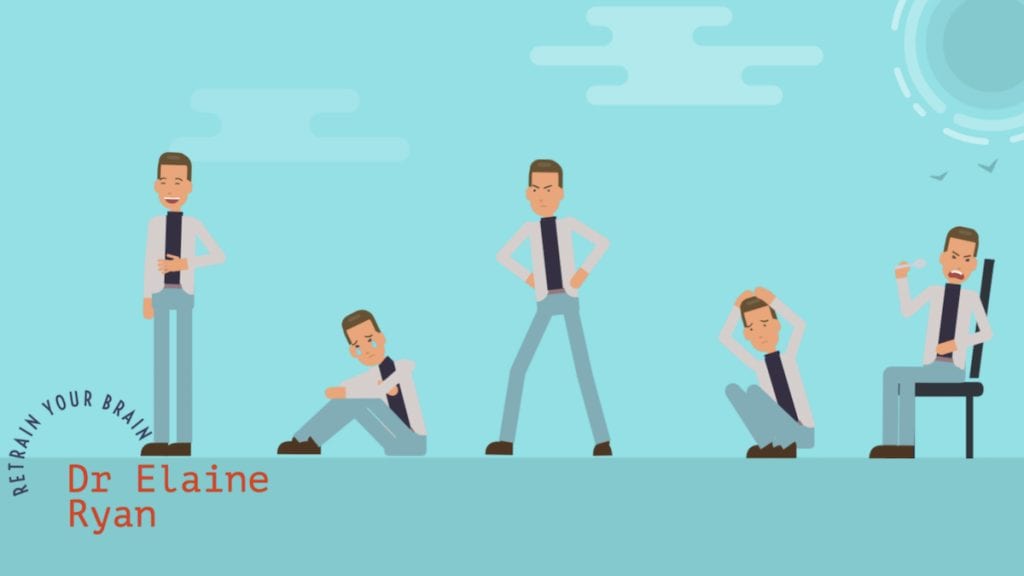Emotions are physiological states that evolved to motivate, causing a change in your body to help you react to, for example, something that may cause you harm. Fear prepares you to escape danger, but disgust can stop you from ingesting something that may make you ill, and anger can prepare you to fight.

What are emotions?
Have you ever been sitting in traffic, and the person behind keeps beeping their horn and gesturing for you to move faster? Your heart might have pounded; you might have noticed your brow furrowed and lips pursed if you looked in the rear-view mirror while wanting to make a rude gesture at the person behind you. This is the emotion of anger in this case.
In this example, anger occurs as soon as the driver behind beeps their horn and gestures at you. Emotions evolve to help you respond to specific triggers, such as a threat. But experiencing anger and being ready to fight may have been an appropriate response thousands of years ago. Still, reacting this way now when for example, your boss criticising you is not appropriate. Emotions are fleeting when compared to moods. Moods can hang around. Evolutionary psychologists hypothesize that emotions evolved to help people react to specific environmental triggers. To help me explain this, I need to introduce you to the following components.
Components of an emotion
- Subjective experience
- Physiological response, and
- behavioural response.
If someone was about to eat a berry they had picked, and it was poisonous, the subjective experience is picking it. The physiological response would screw up their nose, frowning and turning away from the berry as it came close to their mouth. The behavioural response is closing their mouth and throwing away the berry. This would all occur from the emotion of disgust.
If someone with a knife approached and wanted to steal the berries, this was the situational experience. Faster heart rate and breathing and more energy to the muscles is the change in their physiology to help them respond by either standing and facing the attacker or running away, the behavioural response. This is the emotion of fear.
Why is it essential that you understand emotions?
The quick answer is not to let fleeting emotions spiral into a negative mood, and it helps with anxiety, fear, panic, and anger!
Understandable, appropriate and inappropriate emotions.
Whether you lose your temper too quickly and can’t calm down or get too afraid to speak up in front of other people, with some knowledge, you can understand why this happens and start working on changing inappropriate emotions.
What is an inappropriate emotion?
An inappropriate emotion occurs when it is too extreme or does not match the situation. It could be because of complex mental health conditions or neurological conditions, but this article explains inappropriate emotions in terms of what people come to therapy with me for, such as,
- Not being able to control anger
- Anxious in situations that do not warrant fear.
As already stated, all emotions are understandable, and to help you; you need to understand that they all have a function.
What function do emotions have?
All emotions have a function and an associated action or urge.
Function of fear
Fear keeps you safe from harm, giving you the energy you need to fight. The action can make you freeze.
Function of anger
Anger can occur when you are not getting what you want. The function is to energise you to fight. The action is to attack.
Function of disgust
The emotion of disgust helps you avoid getting sick or contaminated. Action is repulsion.
Function of shame
You feel shame if you think you have done something wrong. Action is to hide yourself or action rather than expose what you think you have done wrong. They also have a tone. Facial expressions; anger makes you clench your jaw Your muscles reflect emotions. You get tense with fear. Body posture changes with different emotions; it might cover your face when ashamed or cower when afraid. Shake your fist or clench them with anger.
Summary
Understanding all the components that makeup emotions can show you how they all work together. Your brain can get a signal that prompts a physiological change that makes you feel anxious. You can have an anxious thought that starts a physiological change and stops you from attending an event. These lightning reactions are significant when you are in danger but not helpful if you have an inappropriate response in a meeting with your boss. Even minor changes in one component can have a decent effect on changing how you feel. It’s hard to remain angry when you lower your tone and relax your jaw.
Quick experiment for you to try.
Imagine I’ve just told you you have won the lottery. I want you to say out loud in a high squeaky voice, with a massive smile on your face, that’s great; I can’t believe it; I’m so happy, I’m overjoyed. Then repeat the experiment with a squeaky voice, but keep your face relaxed and do not smile. Feel the difference? That’s just one simple change! Psychology is the study of the brain, emotions and behaviour and my aim is to simplify my knowledge for you to help yourself.
